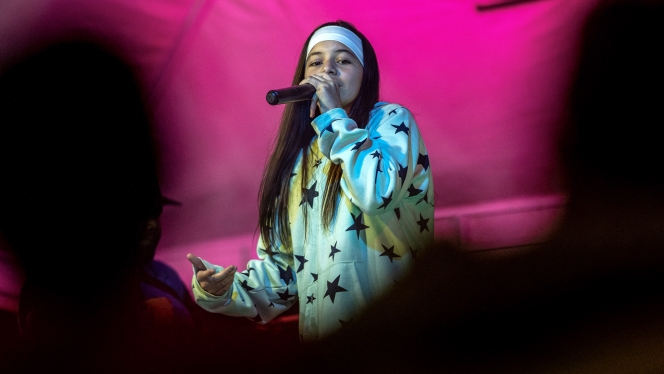Fritware bowl, Iran (Kashan), Early 13th century, 10cm high, 22.2.cm diameter. Amir Mohtashemi Ltd at Brafa Art Fair, Brussels, 21-29 january 2017.
This bowl rises from a short foot to a rounded, cylindrical shape. It has been painted on both the interior and exterior. The artist has used black and white upon a blue ground under a transparent glaze. The interior of the piece boasts a highly stylised water weed motif, while the exterior features large conch-shaped patterns, painted in a fluid, black line that swells from thick to thin upon a white ground. This alludes to the greater freedom Kashan potters and painters enjoyed following the adoption of new methods.
During this time a new style of painting was developed to show off the new innovations in ceramic technology: the adoption of the frit body, and techniques of decoration that culminated at the very end of the century in underglaze painting. The artist has depicted fine, crisp motifs in black under brilliant glaze, while cobalt blue has been used to heighten the colouring. Wares in this new style and technique are dated from A.D. 1204 -16, and what was evidently large-scale production was only brought to a halt by the Mongol invasions towards the end of the second decade of the century.
Related examples can be found in major museum collections today. The Al-Sabah Collection in Kuwait, for example, possesses one such Kashan bowl which appears related in size, form and decoration, featuring parallel ‘water-weed motifs’. (Reprinted in, Watson, Ceramics from Islamic Lands, London, Thames & Hudson, 2004, p.338, Cat.N.6.). Further, The Victoria and Albert Museum also has within its collection a bowl painted in underglaze black with a pale blue inner rim (Reprinted in, Lane, Early Islamic Pottery, London, Faber & Faber, 1932, pl. 86.
Amir Mohtashemi Ltd. Indian and Islamic Works of Art, 69 Kensington Church Street, London W8 4BG, United Kingdom










































































